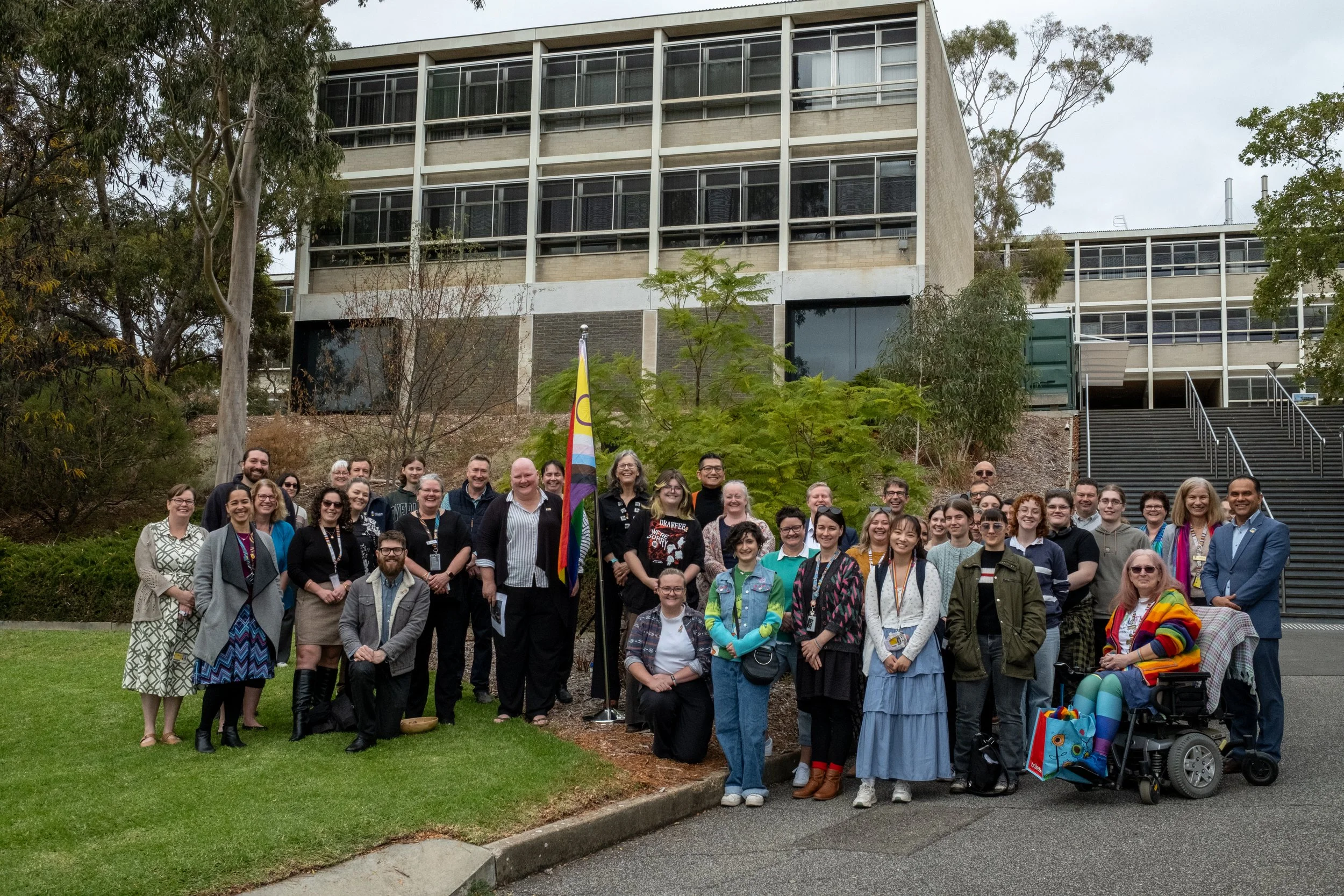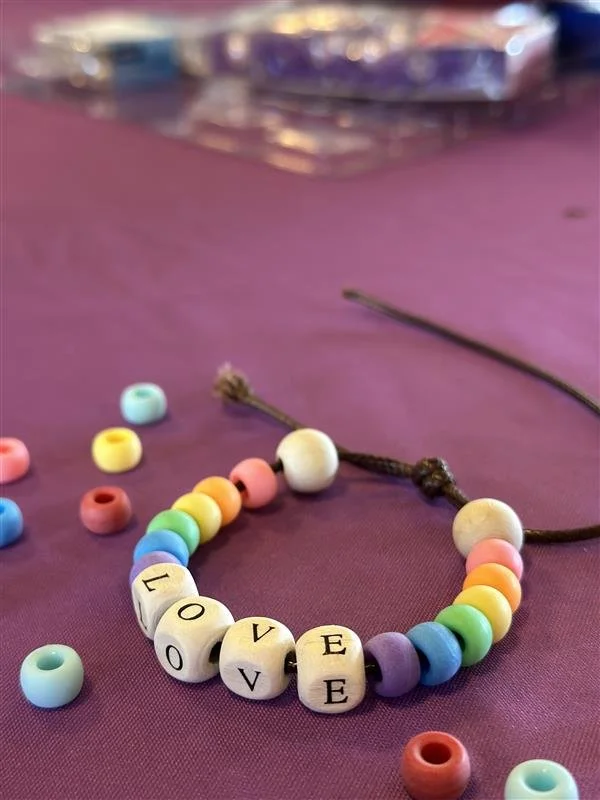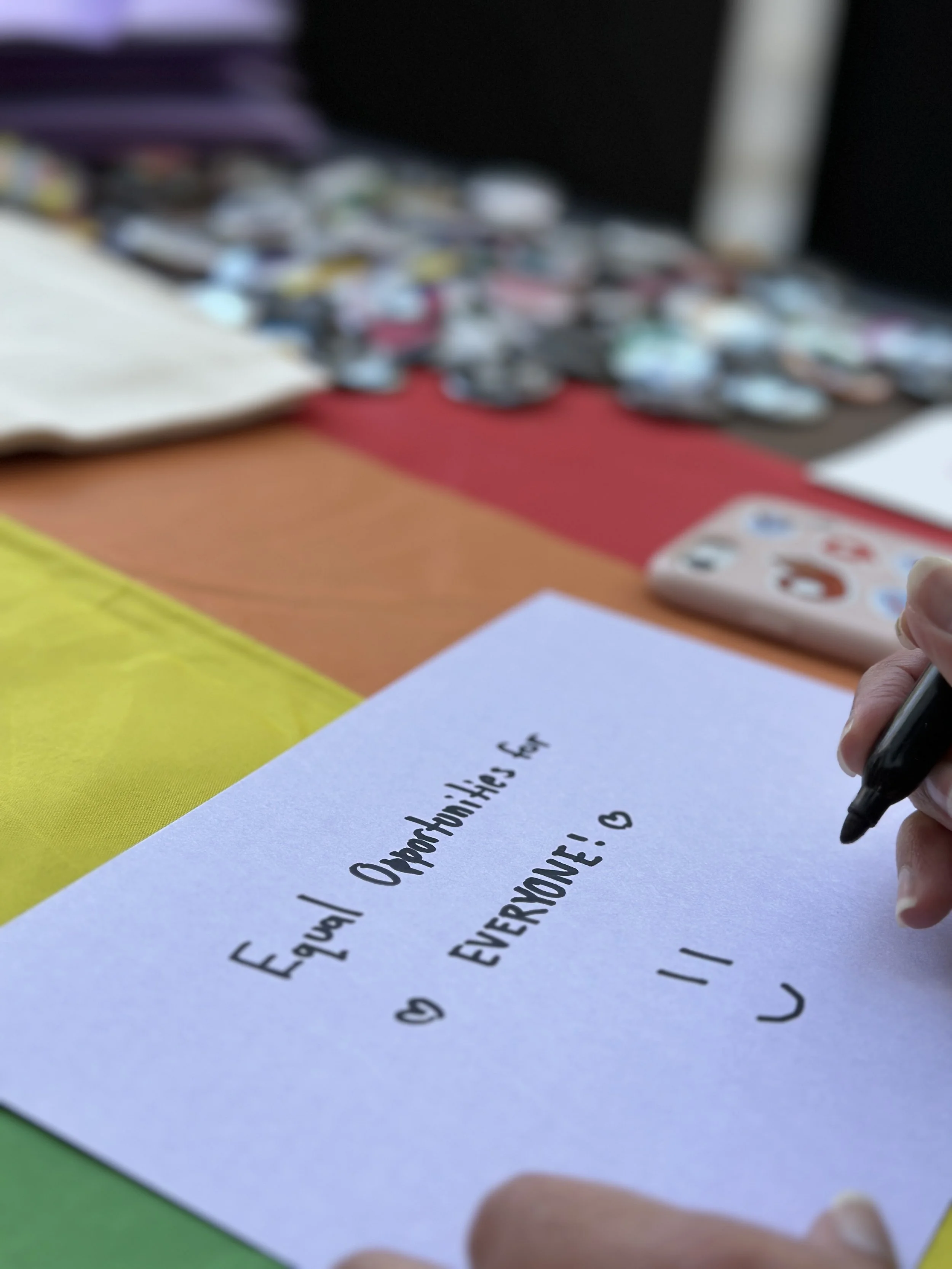A look back at Queer History for LGBTQIA+ History Month
October is LGBTQIA+ history month.
Founded in 1994 by a Missouri high school teacher, we commemorate the marches on Washington in 1979 and 1989 and observe the history of the LGBTQIA+ civil rights movement. As of 2020, LGBTQIA+ History Month is now recognised internationally by Australia, Hungary, the USA, the UK, Canada, Greenland, Brazil and the city of Berlin (as the rest of Germany seems to be lagging behind).
LGBTQIA+ history, to me, is the history of my community. And this month is a complex one for me. It is a celebration and a reflection. A time for joy and mourning. 2025 is an especially historic year to the South Australian LGBTQIA+ community, and in extension to me, as it marks the 50th year anniversary of the decriminalisation of Homosexuality. I hope to take you through some snippets in our history to look back, reflect, mourn for who we've lost, and celebrate how far we've come.
Part 1: The Murder of Dr Duncan + Decriminalisation of Homosexuality
Dr George Duncan was a gay man, and lecturer at the University of Adelaide. On May 10 1972, a group of men, thought to be police officers, threw him into the River Torrens, where he drowned. Public outrage following his murder acted as a catalyst for LGBTQIA+ law reform.
Multiple attempts were made to decriminalise homosexuality in the coming years. In 1972, SA Parliament passed a bill which allowed legal defence for “homosexual acts” committed in private.
Then, on 27 August 1975, homosexuality was fully decriminalised in South Australia.
However, it is not until 2013 that The Spent Convictions Act (SA) allowed pre-1973 “homosexual offences” to be expunged from criminal records.
Part 2: The HIV AIDs Pandemic
HIV/AIDS was a devastating pandemic which predominantly impacted the gay community in the USA, although its effects were global. HIV/AIDS first entered public perception in 1981. In the USA, unusually high rates of pneumonia and lung cancer are reported in gay men. The disease was initially called Gay-Related Immune Deficiency (GRID). This created a long-lasting and damaging association between homosexuality and AIDS, which hindered the development of treatment and prevention strategies.
It wasn't until enough heterosexual people contracted “GRID” that it was renamed Acquired Immunodeficiency Syndrome (AIDS).
Concurrently, anti-LGBTQIA+ movements were on the rise, with conservative and Christian leaders petitioning against gay rights. The combined hysteria of contracting HIV and Christian fearmongering led to increased ostracisation. Individuals with HIV and AIDS struggled to find medical care, with healthcare workers refusing to touch or treat people who contracted the virus.
As the anti-gay movement gained traction, and with the election of Ronald Reagan in 1980, the AIDS pandemic went completely ignored by the government. In 1982, Reagan's press secretary Larry Speakes laughed when asked if the president was tracking the spread of AIDS, as it was a “gay virus”. It wasn't until 1985 that Reagan made public mention of AIDS.
With no community, medical or government support, LGBTQIA+ activists stepped up to internally support the community and those affected by HIV/AIDS. In 1987, the AIDS Coalition To Unleash Power, or ACT UP, was formed. ACT UP staged nation-wide protests, forcing the HIV/AIDS pandemic into the public eye. ACT UP is credited for the government's eventual response to the HIV/AIDS epidemic, allowing quicker testing and diagnosis, lifesaving experimental drugs, and increased public awareness of the epidemic beyond an ignorable “gay disease”.
In 1987, the first antiretroviral drug for HIV, Zidovudine (AZT) entered the market, though it was enormously costly. In the USA, a year of AZT would cost upwards up $10,000, leaving most unable to receive treatment, as pharmaceutical companies profited off the pandemic.
By 1995, AIDS was the leading cause of mortality in men aged 25-44.
Compared to the USA, Australia had a relatively swift response through public health campaigns including clean needle programs resulting in a devastating, but lower death toll of 6,845. And while deaths were lower, the LGBTQIA+ community, and especially queer men and trans women dealt with further increased stigma, ostracisation and discrimination.
Part 3: The Sex Discrimination Act (Australia)
In 1984, The Sex Discrimination Act was passed by the Federal Government. The Act prohibits discrimination on the basis of sex, gender, sexual orientation and intersex status.
The Act was primarily created to stop all forms of discrimination against women, but has become a valuable legal protection to the LGBTQIA+ community. Section 5B of The Sex Discrimination Act specifically names gender identity as a protected characteristic which is distinct from sex at birth.
The Sex Discrimination Act is currently being challenged in Australian Court in Tickle vs. Giggle, where Sal Grover, owner of social app “Giggle For Girls”, is attempting to remove “gender identity” as a protected characteristic under the Act and make it legal to exclude trans women from women's spaces
Part 4: Marriage And Family Equality
While marriage was initially a matter of states and territories, The Marriage Act (1961) was the first piece of federal legislation which regulated marriages. The Act did not specifically define valid marriages and instead relied on common law.
In 2004, The Howard Government passed The Marriage Amendment Act, which prohibited same-sex marriages, including the recognition of overseas same-sex marriages. Marriage was defined as ‘the union of a man and a woman to the exclusion of all others, voluntarily entered into for life’. Additionally, The Howard Government reformed The Family Law Act to forbid same-sex couples from adopting children. Between 2004-2016, over 20 unsuccessful marriage-equality bills were introduced to Parliament.
It wasn’t until 2017 that the federal government released a plebiscite; a voluntary postal survey, where 61.6% voted in favour of same-sex marriage.
Following the Plebiscite, on 9 December 2017, The Marriage Act was amended, and marriage was defined as ‘the union of 2 people to the exclusion of all others, voluntarily entered into for life’; thus legalising same-sex marriage.
In the same year, same-sex couples were given the right to adopt children, and equal access to assisted reproductive technology and surrogacy.
Words by Shai Wittles (He/They)
Want to learn more about queer history?
www.queerarchives.org.au/ has the largest collection of material relating to Australian LGBTQIA+ life, including archival photos, audio-visual, podcasts, posters and objects.
www.minus18.org.au aims to improve the health and wellbeing of, and provide a safe environment for, same-sex attracted and gender diverse young people in Australia with events online resources.
www.iview.abc.net.au/show/queerstralia ABC documentary hosted by comedian and ‘professional lesbian’ Zoe Coombs Marr, wipes away the straight-washing and reveals the untold and frankly fascinating Queer history of Australia.
References from article available on request, please contact empiretimes@flinders.edu.au
LGBTQIA+ Events on Campus this October
Pride Disco
70s theme party to celebrate Queer history and 50th anniversary of decriminalisation of homosexuality. Join FUSA for Drag performances, photobooth, prizes for best 70s dress-up, free pizza!
Date: Tuesday 21 October
Time: 5:30pm – 7:30pm
Location: Flinders Tavern, Bedford Park.
Queer by Nature
Decorating pots and planting flowers representative of LGBTQIA+ community and history. We’ll also be icing cookies with images of animals that have been observed to be “Queer” in nature; either through unique sexual transitions or exhibiting homosexual behaviours.
Date: Thursday 23 October
Time: 10am – 1pm
Location: Student Hub, Bedford Park
More details to come on FUSA Instagram


